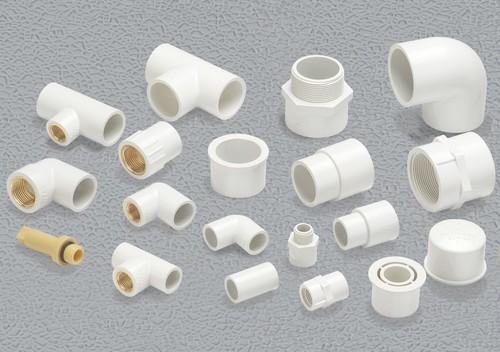Which piping material should you use for plumbing and sewer waste disposal in your next construction project: polyvinyl chloride or PVC, iron, or concrete? Individual circumstances and particular applications largely determine pipe material selection, of course. For instance, location and thus climate, installation mechanism, and whether gravity or pressure is required to move the fluid through the pipe, naturally influence piping decisions, If you are looking for wastewater treatment visit Cleanawater.
Then again, there is also the matter of sustainability. When choosing among PVC pipe products, iron, and concrete, it helps to assess each material according to its lifetime cost and its impact on the environment.
Evaluating a Material’s Sustainability
Building professionals must evaluate each material according to its carbon footprint and greenhouse gas emissions from the cradle (i.e., production) to the grave (i.e., end-of-life). These are best assessed by accounting for individual factors like energy consumption, waste production, rate of deterioration, the potential for leaching and contamination, waste from leaks, and greenhouse gas emissions across its entire lifecycle (from cradle or manufacture to the grave or end-of-life).
Sustainability also naturally encompasses cost and efficiency. Sustainable materials are durable and reliable to ensure no need for frequent replacement and additional material costs. Less frequent replacements also influence carbon footprint and greenhouse gas emissions. Fewer replacements mean less waste, fewer materials required, and less energy consumption in excavating old pipes and installing new pipes.
Finally, a piping material must also have no impact on the substance it is conveying. It should be inert and non-reactive, not only to ensure its longevity but also to safeguard the well-being of the population the pipeline serves. Soil pipes are essential components of plumbing systems, designed to carry waste from toilets and other sanitary fixtures to the sewer or septic tank, ensuring efficient and hygienic disposal of wastewater.
Soil Pipes: Essential for efficient waste disposal in buildings. Durable, corrosion-resistant materials ensure longevity. Available in various sizes and configurations to suit different plumbing needs. Upgrade your plumbing system today!
There have been many lifecycle analyses of various plumbing and wastewater piping materials done through the years. Below are a few of these analyses and studies:
- Hajibabaei, M., Nazif, S., Sereshgi, F.T. (2018), Life cycle assessment of pipes and piping process in drinking water distribution networks to reduce environmental impact
- Sustainable Solutions Corporation (2017), Life cycle assessment of PVC water and sewer pipe and
- comparative sustainability analysis of pipe materials
- Du, F., Woods, G.J., Kang, D., Lansey K.E. (2013), Life cycle analysis for water and wastewater pipe materials
- Kim, D., Yi, S., Lee, W. (2012), Life cycle assessment of sewer system: comparison of pipe materials
- Windsperger, A., Steinlechner, S., Schneider, F. (1999), Investigation of European life cycle assessment studies of pipes made of different materials for water supply and sewer systems – a critical comparison
What is evident from a review of these studies is that PVC is a sustainable piping option for the following reasons:
Low Failure Rate
When water mains break, three things happen: flooding, service disruption, and drinking water contamination. When wastewater pipes break, there’s also service disruption due to loss of pressure, ground contamination, and the risk of pipe exterior erosion.
These are things no one wants to happen — for obvious reasons. Plus, there’s also the waste of a precious resource in the case of water mains breaks. The United States Environmental Protection Agency says 10% of homes have water leaks, and these account for 90 gallons or more of water wasted every day. Meanwhile, an average household’s leak can account for almost 10,000 gallons of wasted water per year.
The failure rate must be considered when selecting a piping material to use in plumbing and wastewater piping projects. PVC pipes are well ahead of other piping options based on this factor alone.
According to dig-up reports, PVC has the lowest water-main break rate. In fact, PVC water pipe break rates decrease over time, whereas the break rate of iron and concrete pipes increase over time. The improvement of pipe installation and inspection practices through the years can only lead to a further reduction of PVC pipe failure rates.
According to a longevity report by Steven Folkman (2014), the average water main fails at 47 years. The main reason for the failure: corrosion.
This should tell you one thing. To extend the serviceable life of water and wastewater piping, forgo corrosion-prone materials (i.e., iron and concrete pipes) in favor of corrosion-proof or corrosion-resistant PVC pipes.
Reports from the assessment of dug-up pipes confirm the longevity of PVC pipes and estimate their serviceable life to be 100 years. The following are some significant findings cited in Folkman’s (2014) report:
- PVC pipes excavated after nearly 50 years of use were tested and passed all applicable standards.
- After 25 years in freezing conditions, PVC pipes were assessed and found to meet virtually all of the requirements for new pipes.
- PVC pressure pipes, excavated after nearly 30 years in operation, were tested and found to have not lost any strength.
- 35-year-old PVC pipes show no aging-induced changes in their mechanical properties; they are as ductile and resistant to internal pressure as new pipes.
PVC is chemically stable or chemically non-reactive. It does not react to and would not be degraded or corroded by corrosive substances like inorganic acids, alkalis, bases, salts, fats, and alcohols. Hence, it can withstand exposure to corrosive water, wastewater, disinfectants, and sewer gasses. Additionally, PVC pipes do not have oxidation-induced failures or corrosion due to biofilm and bacterial growth.
Assured Water Quality
Water quality is a crucial consideration, particularly in drinking water transport systems. Building professionals must ensure no chemicals from the piping materials would leach into the water supply.
PVC pipes also satisfy this requirement because:
- They are not a nutrient source for bacteria, and bacterial growth and biofilm cannot degrade PVC.
- They are chemically stable and will not react with most chemicals, ensuring the integrity of the transported substances.
- They do not contain toxic plasticizers like Diethylhexyl phthalate or DEHP; water supply and wastewater pipes are made of rigid or unplasticized PVC.
- They are free from lead and BPA.
- They do not release or leach vinyl chloride monomer or VCM.
PVC is a sustainable piping material primarily because of its exceptional chemical stability, ensuring it will not contaminate nor get eroded by the fluid it is transporting. As such, PVC pipes are strong contenders in water supply and wastewater structures and are a staple in swimming pool construction and landscaping projects.
Environmental Impact
Any talk of sustainability is not complete without assessing the material’s environmental impact.
CO2 emissions
All piping materials have the greatest negative impact on the environment (measured by the kilograms of carbon dioxide emitted per kilometer of pipe length) during production. Furthermore, when the production, transportation (i.e., transporting the pipes to where they need to be), and installation phases are considered together, ductile iron pipes have the highest CO2 emissions.
How about PVC pipes? They produce less CO2 emissions than ductile iron.
PVC pipes are better than concrete, as well. Overall, the greenhouse gas emissions of concrete pipes are much higher than PVC pipes. In fact, the cement industry accounts for more than 5% of the world’s CO2 emissions.
Overall Environmental Impact
GHG emissions are not the only way to assess the environmental impact of piping materials. Based on the lifecycle assessment of concrete, ductile iron, and PVC piping materials by Vahidi, Jin, Das, Singh, and Zhao (2015), ductile iron has the greatest negative impact when it comes to the following:
- Carcinogens
- Respiratory organics
- Respiratory inorganics
- Climate change
- Radiation
- Acidification/Eutrophication
- Land use
- Minerals
- Fossil fuels
PVC has much less impact than ductile iron across all categories, including ecotoxicity and ozone layer depletion.
Furthermore, when overall environmental impact is expressed as a single life cycle score, it is evident that the PVC life cycle has the least negative impact on the environment.
A breakdown of its environmental impact score shows a considerable portion of its impact derives from its fossil fuel impact, which is natural since PVC pipes are made from chemicals sourced from fossil fuels. Concrete pipes may fare better than PVC pipes in fossil fuel impact, but they have the greatest ecotoxicity among the materials. Furthermore, PVC pipes have a less overall environmental impact than concrete pipes.
PVC pipes manufacturing is also very efficient. It requires little water input, and closed-loop water systems have further reduced the industry’s water consumption. PVC pipes manufacture, particularly pipes extrusion, also requires low energy input. Finally, the PVC manufacturing process leads to very little waste because scraps can be immediately reused.
Pipe with PVC
PVC pipes have a low failure rate, will not contaminate the water supply, will not be degraded by the wastewater and sewer gasses, and have a low environmental impact compared to other piping materials. Thus, they are sustainable piping materials worth considering for your next build project.

















